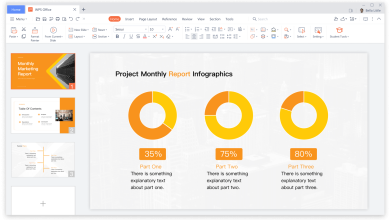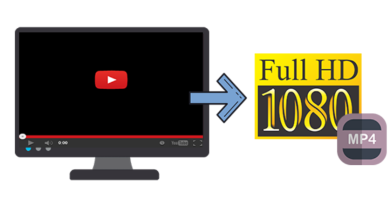
In the rapidly evolving landscape of IT infrastructure and remote work, organizations must equip themselves with powerful solutions to remain competitive and productive. Windows Server and Remote Desktop Services 2022 (RDS) are two essential components that play crucial roles in ensuring seamless operations and empowering remote workforces. Microsoft’s commitment to continuous improvement has led to the development of Windows Server 2019 and Remote Desktop CALs 2022, each offering unique features and capabilities. In this comprehensive comparison, we will delve deeper into the key differences between Windows Server 2019 and Remote Desktop CALs 2022, exploring their benefits, use cases, and the factors that organizations should consider while choosing one over the other.
Windows Server 2019 – Laying the Foundation for Modern IT
Released in October 2018, Windows Server 2019 is the successor to Windows Server 2016, and it represents a significant leap forward in Microsoft’s server operating system. Following the Long-Term Servicing Channel (LTSC) model, Windows Server 2019 is designed for organizations that prioritize stability, reliability, and long-term support.
Key Features of Windows Server 2019
- Enhanced Security: Security is of paramount importance in today’s digital world, and Windows Server 2019 addresses this with advanced security features. Windows Defender Advanced Threat Protection (ATP) provides real-time threat detection, while Shielded Virtual Machines (VMs) protect sensitive data from unauthorized access, ensuring a robust and secure server environment.
- Hybrid Cloud Integration: As more organizations embrace hybrid cloud strategies, Windows Server 2019 offers seamless integration with the Azure cloud platform. With the Azure Hybrid Use Benefit, organizations can extend their on-premises workloads to the cloud, creating a flexible and scalable infrastructure.
- Storage Migration Service: Migrating data from legacy servers to modern storage solutions can be a daunting task. Windows Server 2019 simplifies this process with the Storage Migration Service, reducing downtime and making data migration more efficient and manageable.
- Windows Admin Center: Windows Admin Center is a browser-based management tool that provides a centralized interface for managing servers, clusters, and hyper-converged infrastructure. This intuitive tool simplifies server administration, streamlining various tasks and enhancing productivity for IT administrators.
- Hyper-Converged Infrastructure (HCI): Windows Server 2019 strengthens support for Hyper-Converged Infrastructure (HCI), a software-defined approach that combines compute, storage, and networking into a single platform. HCI offers greater scalability, agility, and cost-effectiveness, making it an attractive option for modern data centers.
Remote Desktop CALs 2022 – Empowering the Remote Workforce
In today’s dynamic work environment, remote work has become increasingly prevalent, necessitating robust remote desktop solutions. Remote Desktop CALs (Client Access Licenses) are integral to the Remote Desktop Services (RDS) licensing model, allowing users or devices to access virtual desktops or remote applications hosted on a Windows Server. Remote Desktop CALs 2022 introduces several enhancements to meet the demands of a distributed workforce.
Key Features of Remote Desktop CALs 2022
- Enhanced User Experience: Remote Desktop CALs 2022 focuses on delivering an improved user experience during remote sessions. With better graphics and multimedia capabilities, remote workers can enjoy smoother video playback and improved performance for graphic-intensive applications, ultimately boosting productivity and collaboration.
- Universal Printing: Printing from virtual environments can be challenging due to the need for specific printer drivers. Remote Desktop CALs 2022 introduces the Universal Print feature, simplifying printing by eliminating the reliance on complex printer drivers. This ensures efficient and consistent printing from remote sessions to local printers, streamlining the printing experience for remote workers.
- End User Insights: IT administrators play a crucial role in maintaining a smooth remote desktop experience for users. Remote Desktop CALs 2022 includes end-user insights, empowering administrators to monitor user experiences and identify potential issues proactively. By gaining insights into user behavior and session performance, administrators can optimize the remote desktop environment and provide seamless support to remote workers.
- Azure Role-Based Access Control (RBAC): With the increasing adoption of Azure services, Remote Desktop CALs 2022 integrates with Azure Role-Based Access Control (RBAC), allowing organizations to manage access and permissions more efficiently in a remote desktop environment. This integration streamlines administrative tasks and ensures secure access to resources, safeguarding sensitive data and enhancing overall security.
- Security Enhancements: Security is a top priority for remote desktop scenarios, especially when dealing with remote access to critical resources. Remote Desktop CALs 2022 incorporates several security features, such as Azure Active Directory Conditional Access and Multi-Factor Authentication (MFA), to strengthen the overall security of remote connections. These features add an additional layer of protection, ensuring secure access to corporate resources from remote locations.
The Decision – Windows Server 2019 or Remote Desktop CALs 2022?
The decision between Windows Server 2019 and Remote Desktop CALs 2022 is contingent on the specific needs and priorities of an organization.
When to Choose Windows Server 2019:
- Stability and Reliability: Organizations that prioritize stability and a predictable update cadence may find Windows Server 2019 the preferred option. As part of the LTSC model, it provides a consistent experience with extended support and security updates, ensuring a reliable foundation for critical workloads.
- Hybrid Cloud Adoption: For organizations seeking to adopt hybrid cloud solutions, Windows Server 2019’s enhanced integration with Azure makes it an ideal choice. The Azure Hybrid Use Benefit allows organizations to leverage existing Windows Server licenses in the Azure cloud, facilitating a seamless hybrid cloud infrastructure.
- Infrastructure Modernization: Windows Server 2019’s features, such as the Storage Migration Service and Windows Admin Center, offer valuable tools for organizations looking to modernize their IT infrastructure and update legacy systems. By utilizing these features, organizations can optimize their infrastructure and achieve better operational efficiency.
When to Choose Remote Desktop CALs 2022:
- Enhanced User Experience: Organizations with remote workforces or virtual desktop environments can significantly benefit from Remote Desktop CALs 2022’s improved graphics capabilities. A smoother and more efficient user experience during remote sessions can lead to higher productivity, employee satisfaction, and collaboration.
- Streamlined Printing: The Universal Print feature in Remote Desktop CALs 2022 simplifies printing in virtual environments, reducing complexities associated with printer drivers. This results in more efficient and consistent printing from remote sessions to local printers, enhancing the overall printing experience for remote workers.
- Azure Integration and Advanced Security: For organizations invested in Azure services and advanced security features, Remote Desktop CALs 2022 offers valuable integration with Azure RBAC and enhanced security options. This strengthens the overall security of remote connections, ensuring secure access to corporate resources from any location.
Conclusion
Windows Server 2019 and Remote Desktop CALs 2022 are indispensable components in today’s technology-driven business landscape. They offer organizations powerful tools for managing IT infrastructure, enhancing security, and empowering remote workforces. The decision between the two depends on specific business needs, long-term strategies, and the desire for stability, security, and enhanced user experiences.
By carefully evaluating these factors, organizations can make informed decisions, ensuring that they leverage the full potential of both Windows Server 2019 and Remote Desktop CALs 2022 to create a productive, secure, and future-ready digital workspace.



